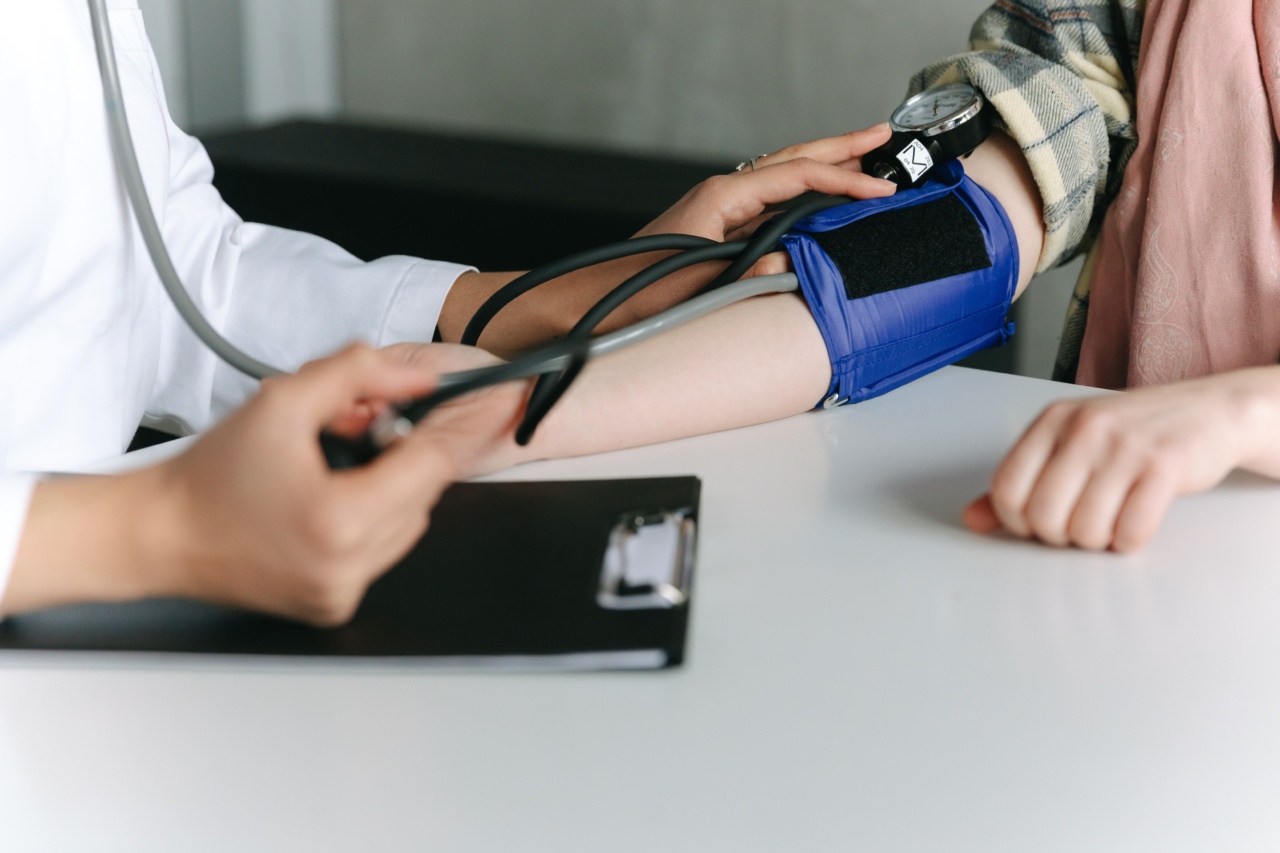Pulmonary arterial hypertension (PAH) is a progressive and life-threatening condition that affects the blood vessels in the lungs. It is categorized as a type of pulmonary hypertension, which refers to high blood pressure in the arteries of the lungs.
What is Pulmonary Arterial Hypertension?
Pulmonary arterial hypertension occurs when the small blood vessels in the lungs, called pulmonary arteries, become narrowed, blocked, or damaged.
As a result, the heart must work harder to pump blood through the lungs, causing increased pressure in the pulmonary arteries. Over time, this increased pressure can lead to heart failure and other complications.
Causes of Pulmonary Arterial Hypertension
The exact cause of pulmonary arterial hypertension is often unknown and can vary between individuals. However, there are several underlying conditions and risk factors that may contribute to its development:.
1. Connective Tissue Disorders
Connective tissue disorders, such as scleroderma and lupus, can increase the risk of developing pulmonary arterial hypertension. These conditions can cause inflammation and damage to the blood vessels in the lungs.
2. HIV and AIDS
People with HIV or AIDS have a higher risk of developing pulmonary arterial hypertension. The virus can directly affect the blood vessels, leading to pulmonary hypertension.
3. Genetic Factors
Some cases of pulmonary arterial hypertension are caused by genetic mutations inherited from one or both parents. These genetic defects can affect the functioning of cells in the blood vessels, leading to their abnormal growth and narrowing.
4. Certain Medications
Some appetite suppressants and drugs used to treat other conditions, such as certain antidepressants, can increase the risk of developing pulmonary arterial hypertension.
5. Environmental Factors
Exposure to certain toxins, such as asbestos or drugs like methamphetamine, can contribute to the development of pulmonary arterial hypertension.
Symptoms of Pulmonary Arterial Hypertension
The symptoms of pulmonary arterial hypertension can vary depending on the stage of the disease and the extent of the damage to the blood vessels. Some common signs and symptoms include:.
1. Shortness of Breath
One of the hallmark symptoms of pulmonary arterial hypertension is shortness of breath, especially during physical activity. As the disease progresses, shortness of breath can occur even at rest.
2. Fatigue
People with pulmonary arterial hypertension often experience fatigue and decreased stamina due to the increased effort required by the heart to pump blood through the narrowed pulmonary arteries.
3. Chest Pain
Chest pain or discomfort may occur as a result of the increased pressure in the pulmonary arteries. This pain can be sharp or dull and may worsen during physical activity.
4. Dizziness and Fainting
Reduced blood flow to the brain caused by pulmonary arterial hypertension can lead to dizziness, lightheadedness, and fainting spells.
Diagnosis of Pulmonary Arterial Hypertension
Early diagnosis of pulmonary arterial hypertension is crucial for managing the condition effectively. The diagnosis process typically involves:.
1. Medical History and Physical Examination
Your doctor will review your medical history, ask about your symptoms, and conduct a physical examination to check for signs of pulmonary arterial hypertension.
2. Pulmonary Function Tests
Pulmonary function tests, such as spirometry and lung diffusion tests, may be performed to assess lung function and determine if there are any underlying respiratory conditions.
3. Echocardiogram
An echocardiogram uses ultrasound waves to create images of the heart’s structure and function. This test can help evaluate the size and function of the heart and detect any abnormalities.
4. Right Heart Catheterization
Right heart catheterization is considered the gold standard for diagnosing pulmonary arterial hypertension. It involves inserting a thin tube called a catheter into the pulmonary artery to measure the pressure in the blood vessels.
Treatment of Pulmonary Arterial Hypertension
Although there is no known cure for pulmonary arterial hypertension, various treatment options aim to manage symptoms, slow the progression of the disease, and improve quality of life. Some common treatment approaches include:.
1. Medications
Several medications, such as calcium channel blockers, endothelin receptor antagonists, and phosphodiesterase-5 inhibitors, can help relax and widen the blood vessels in the lungs, reducing the strain on the heart.
2. Oxygen Therapy
Oxygen therapy may be prescribed if oxygen levels in the blood are low. Supplemental oxygen can help improve breathing and relieve symptoms.
3. Lung Transplantation
In severe cases where other treatment options are ineffective, lung transplantation may be considered as a last resort. This procedure involves replacing the diseased lungs with healthy donor lungs.
Lifestyle Modifications for Pulmonary Arterial Hypertension
Managing pulmonary arterial hypertension also involves adopting certain lifestyle modifications to improve overall well-being. These may include:.
1. Regular Exercise
Avoiding strenuous activities is important, but regular light exercise, as recommended by a healthcare professional, can help improve cardiovascular health and stamina.
2. A Healthy Diet
Eating a well-balanced diet rich in fruits, vegetables, whole grains, and lean proteins can support overall health. Limiting salt intake is also crucial for managing fluid retention.
3. Avoiding Smoking
Smoking can further constrict the blood vessels and worsen symptoms. Quitting smoking and avoiding secondhand smoke is strongly advised.
4. Emotional Support
Pulmonary arterial hypertension can impact mental health and well-being. Seeking emotional support, joining support groups, or attending counseling sessions can help individuals cope with the challenges of the condition.
Conclusion
Pulmonary arterial hypertension is a complex and potentially life-threatening condition. Understanding its basics, including causes, symptoms, diagnosis, and treatment options, is vital for individuals affected by this disease.
By working closely with healthcare professionals and implementing lifestyle modifications, individuals with pulmonary arterial hypertension can better manage their condition, improve their quality of life, and reduce the risk of complications.



























